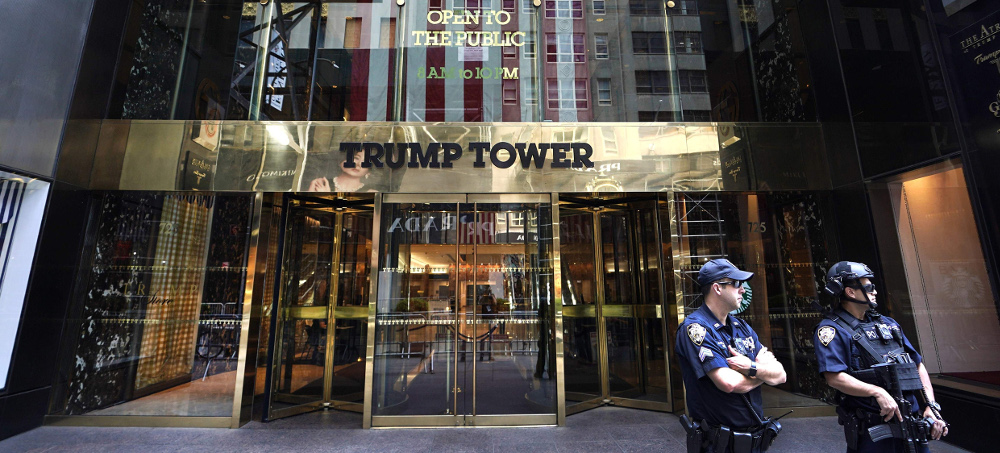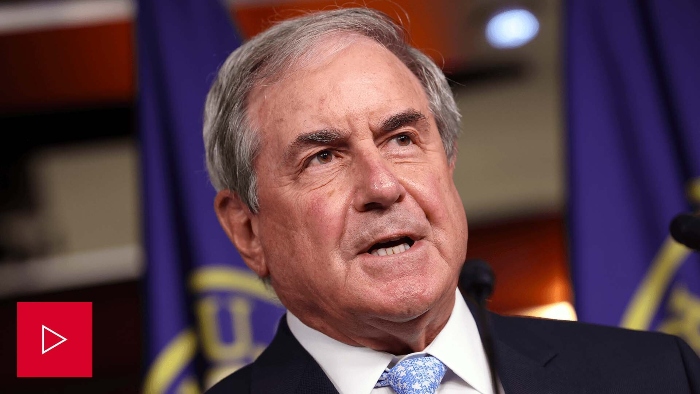
03 September 21
Live on the homepage now!
Reader Supported News

Joe Manchin's Dirty Empire
Daniel Boguslaw, The Intercept
Boguslaw writes: "Manchin has long argued that the environmental costs of coal extraction pale in comparison to the economic toll that regulation would bear out on Appalachia."
In the early hours of August 11, the Senate voted to approve a $3.5 trillion budget resolution that would mark the nation’s most significant investment in the fight against climate change ever undertaken in the United States. Joe Manchin, D-W.Va., cast the tie-breaking vote.
The resolution’s approval kicked off a legislative process likely to last months, all of it hinging on Manchin’s continued support. Not long after casting his vote, he issued a public statement warning the bill’s backers not to take him for granted.
“Adding trillions of dollars more to nearly $29 trillion of national debt, without any consideration of the negative effects on our children and grandchildren, is one of those decisions that has become far too easy in Washington,” Manchin said. The month prior, he had specified that some of the climate-related provisions were “very, very disturbing.”
“If you’re sticking your head in the sand, and saying that fossil [fuel] has to be eliminated in America, and they want to get rid of it, and thinking that’s going to clean up the global climate, it won’t clean it up all,” Manchin told CNN after a private meeting with President Joe Biden and his fellow Senate Democrats. “If anything, it would be worse.”
Manchin’s claim that climate pollution would be worsened by the elimination of fossil fuels — or by the resolution’s actual, more incremental climate provisions — is highly dubious, if not outright false. What would unquestionably be impacted, however, is Manchin’s own personal wealth.
Though Manchin’s motivations are often ascribed to the conservative, coal-friendly politics of West Virginia, it is also the case that the state’s senior senator is heavily invested in the industry — and owes much of his considerable fortune to it.
For decades, Manchin has profited from a series of coal companies that he founded during the 1980s. His son, Joe Manchin IV, has since assumed leadership roles in the firms, and the senator says his ownership is held in a blind trust. Yet between the time he joined the Senate and today, Manchin has personally grossed more than $4.5 million from those firms, according to financial disclosures. He also holds stock options in Enersystems Inc., the larger of the two firms, valued between $1 and $5 million.
Those two companies, Enersystems Inc. and Farmington Resources Inc., the latter of which was created by the rapid merging of two other firms, Manchin’s Transcon and Farmington Energy in 2005. Enersystems purchases low-quality waste coal from mines and resells it to power plants as fuel, while Farmington Resources provides “support activities for mining” and holds coal reserves in the Fairmont area. Over the decades, whether feeding tens of thousands of tons of dirty waste coal into the power plants in northern West Virginia or subjecting workers to unsafe conditions, Manchin’s family coal business has almost entirely avoided public scrutiny.
Manchin did not respond to multiple requests for comment.
In 1987, the man who is now the senior senator from West Virginia chose his hometown as the fulcrum for his enterprise. He and his brothers centered their business dealings near Farmington, where their grandfather served as mayor, and established headquarters for Enersystems and Farmington Resources in the nearby city of Fairmont, on the banks of the Monongahela River. Manchin’s brokerage firm has failed to attract the same attention as the scalped mountains and blackened tap water in the southeast region of the state, where mountaintop removal mining has radically altered the once pristine landscape. But in the northern political enclave of Marion County, Manchin’s businesses are fueling environmental degradation and impacting public health with severe consequences.
Farmington is surrounded by some of West Virginia’s oldest mines, dirtiest power plants, and sprawling coal ash dumping grounds. Through these operations Manchin receives hundreds of thousands of dollars in revenue every year.
For the first time, a Type Investigations and Intercept analysis of public records reveals the impact of Manchin’s coal firms. For decades, they have relied on mines and refuse piles cited for dozens of Mine Safety and Health Agency violations, multiple deaths, and wastewater discharging that has poisoned tributaries feeding into the Monongahela River, as hundreds of thousands of tons of carcinogenic coal ash are dumped across Marion County.
While Manchin does not own the mines, refuse piles, and power plants that have polluted Marion County, he continues to reap their financial rewards. In tracing the life cycle of Manchin’s coal, from its origin at refuse sites, to the looming plants it powers, down into the water and soil of northern West Virginia, the steep and complex cost of Manchin’s empire begins to take shape.
Deadly Work
Outside Fairmont in Barrackville, West Virginia, the Barrackville mine lies buried in the ridge rising over an outcropping of abandoned buildings in what was once the town’s bustling mining camp. In 1925, 33 miners lost their lives to a gas explosion in a mine that once supplied coal to the forges of Bethlehem Steel. As of 2019, when the latest comprehensive data was released by the Energy Information Administration, the refuse piles of low-quality coal those miners left behind serve as the second-largest coal source for Manchin’s Enersystems. (The firm moves less coal than the giants of the industry but still sold well over half a million tons from the site between 2008 and 2019.) The dangers of the Barrackville mine didn’t end with the 1925 explosion. Since 2000, the Barrackville site has been cited for five accidents and one death, when a heavy machinery operator was crushed by a bulldozer.
Over the past two decades, the Barrackville refuse pile was cited and fined for more than 30 safety violations by the Mine Safety and Health Administration, or MSHA. The charges include unsafe equipment, unsafe material storage, dangerous lack of lighting, unsafe brakes, failure to adequately inspect electrical equipment, failure to maintain automatic warning devices, unsafe vehicle storage, failure to complete daily safety inspections, failure to mark hazardous chemicals, failure to maintain miner training records, and failure to adequately train miners.
North of Barrackville, on the banks of the Monongahela River, is Enersystems’ largest supplier of waste coal as of 2019, the Humphrey No.7 mine, where over 40 safety violations have been recorded with the MSHA since 2000. These include failure to file adequate reports on coal slurry impoundments, failure to safely control dust, failure to adequately train new miners, failure to maintain adequate vehicle breaks, failure to correct equipment defects, failure to safely maintain power lines, failure to safely store loose hazardous material, failure to maintain adequate firefighting equipment, and failure to properly maintain flammable liquids storage. The mine has also seen two fatalities, the first when a worker died after falling from a coal barge, the second when a worker was crushed to death by a coal car.
“It’s backbreaking, and we always say that even if you survived it, you didn’t survive it,” said Terry Steele, a retired UMWA coal miner in West Virginia. “If you worked anytime underground, and your back is messed up, then the dust got you when you quit.”
Steele said that he voted for Manchin on only one occasion, thanks to the senator’s efforts to secure and stabilize miners’ pensions. Now he’s lobbying Manchin to finally act on easing miners’ access to the federal black lung fund, which was set up to compensate those suffering from pneumoconiosis. Manchin has advanced legislation that begins to address barriers facing black lung claimants, but for many, the bill doesn’t go far enough to ease access to the fund.
While the mining industry is notoriously dangerous, these hazards are not inevitable. Davitt McAteer, assistant secretary of the MSHA under President Bill Clinton and a former mine disaster investigator, told Type and The Intercept that mine safety violations exist on a spectrum. “You can minimize the risk, you can marginalize the risks, and you can protect people,” he said.
McAteer also noted that it should be possible to operate a mine without death and injury. “There are companies that operate [mines] safely without fatal accidents. It can be done, and that holds true with any kind of mine, but you have to spend the time and money to make it happen that way.”
Manchin is no stranger to the consequences of sloppy mine safety. His uncle was killed along with 77 others in the 1968 Farmington Mine disaster — one of the worst mining accidents in U.S. history — mining the same coal seam in Farmington that feeds the Barrackville site. In January, Manchin released a statement on the 15th anniversary of the Sago Mine disaster that took the lives of 12 miners who were killed after a blast trapped them in an Upshur County mine.
“The Sago disaster anniversary reminds us that coal miners risk their lives every day to power our nation, and we must prioritize their health, safety, and security,” Manchin said. “I will continue to fight to make sure no family suffers this terrible loss ever again.”
Toxic Pollution
The workers endangered on the job at coal sites represent a fraction of the population impacted by the coal fields and power plants that prop up Manchin’s business. While racking up workplace safety violations, Enersystems’ two largest suppliers of coal have discharged significant amounts of toxic material into local waterways. Type Investigations and The Intercept found that Enersystems sold coal from mines that not only violated the Clean Water Act but also served as dumping grounds for carcinogenic coal ash. Enersystems has also sold coal to an energy producer pumping acid mine drainage into the mine system running below the greater Fairmont area.
The Barrackville mine was cited by the Environmental Protection Agency in 2018 and 2019 for failure to file quarterly reports on the effluents discharged during the process of coal extraction. When the mine did file in 2020, it reported levels of the toxic heavy metal manganese exceeding Clean Water Act limits by over 600 percent. Excess exposure to manganese has been linked to neurological and fertility impairments and infant deaths. The Buffalo Creek into which the Barrackville mine discharges is listed by the EPA as impaired by over a dozen different heavy metals.
In 2009, the Humphrey No. 7 mine pumped wastewater into a toxic holding pool, where it was then released into Dunkard Creek. The creek feeds into the Monongahela River, where the waste pool discharge helped eliminate almost all life in a 40-mile stretch of river. After the incident, the owner of the mines paid out a multimillion-dollar settlement for Clean Water Act violations.
Michael Hendryx, a professor of environmental and occupational health at Indiana University, told Type and The Intercept that often the water pumped out of simplistic coal wastewater treatment facilities isn’t meaningfully treated.
“They’re these really modest water treatment facilities, and they basically remove the visible sediment and heavy metals and bacterial counts. But they might not be so good at removing organics and difficult-to-remove chemicals like coal cleaning formulas, which are hard to test for because they’re proprietary to the coal producers,” Hendryx said. “You see organics, and other types of chemical compounds like ammonium, and I don’t have a lot of confidence that these publicly treated facilities are doing a great job.”
In a 2010 study, Hendryx showed that coal mining was significantly associated with pollution of waterways and increased cancer mortality in West Virginia. And in a 2016 study, he found that violations for drinking water standards were much higher in coal mining areas in West Virginia.
These extraction sites are not the only polluters in the constellation of businesses that enable Enersystems to return six figure profits. Enersystems’ coal has fueled power plants in northern West Virginia that are major producers of carbon dioxide, sulfur dioxide, and fine particulate matter. At the Grant Town Power Plant, north of Fairmont, health impact reports produced by the EPA and analyzed by the advocacy group Clean Air Task Force estimate that emissions are associated with 18 annual deaths, 169 annual asthma attacks, and eight annual heart attacks. The group also estimated that 2019 monetized health damages from fine particle accumulation produced by the Grant Town Power Plant amount to $196,675,021. Grant Town was the sole recipient of all the coal sold by Enersystems to power plants, according to reports by the U.S. Energy Information Agency and the Public Service Commission of West Virginia between 2008 and 2019.
Public Service Commission of West Virginia coal reports also show that between 2000 and 2004, Enersystems brokered more than 70,000 tons of coal to the Harrison Power Station in Haywood, West Virginia. Fifteen years after the 2004 sales, the same Clean Air Task Force analysis put the 2019 health impact of the Harrison plant at 122 annual deaths, 29 emergency room visits, 49 heart attacks, 65 cases of acute bronchitis, and 1,243 asthma attacks from plant emissions. The cumulative financial health damages is estimated at $1,317,929,058.
The kind of waste coal mined from sites like Humphrey No. 7 and the Barrackville pile have become a cause célèbre for the fossil fuel industry. Industry lobbyists argue that the burning of waste coal helps to reclaim mines by removing waste piles that can leach toxins into the groundwater. In 2010, while serving as governor, Manchin codified this view by overseeing legislation to designate waste coal as an alternative energy source in the Alternative and Renewable Energy Portfolio Act. This practice not only spews tens of thousands of tons of carbon dioxide and sulfur dioxide into the atmosphere, but the combustion chambers also produce a solid, nonaerosolized byproduct: coal ash. In the case of the Grant Town plant, the ash is trucked back to mines across Marion County, including Barrackville, for disposal.
Some studies suggest that the alkaline nature of some kinds of coal ash neutralizes acid mine drainage, a pollutant formed by the reaction of water and oxygen with both above-ground coal refuse and the exposed metals left exposed in abandoned mines. But coal ash can also contain toxic heavy metals that can poison groundwater, further destabilizing West Virginia’s ecosystem. Avner Vengosh, a professor of environmental quality at Duke University who studies the impact of coal ash on the environment, told Type and The Intercept that without precise monitoring and analysis, there is no guarantee that coal ash actually reduces contamination. It may in fact introduce new contaminants into the environment and groundwater.
“A company needs to demonstrate that this practice is successful and that over the long term, the practice is beneficial rather than harming the environment,” Vengosh said. “It all depends on the relationship, the volume, and mass of the acid mine drainage. It’s really important to examine that relationship long term, because in the beginning often it looks great, but then there can be very quickly a breakthrough where fly ash becomes the primary source of contaminants.”
Manchin has been one of coal ash’s most vocal supporters in Congress. In 2016, he sponsored and secured legislation to ease states’ abilities to deregulate the toxic coal byproduct. In a 2016 press release heralding the bill’s passage, he wrote, “The overregulation of coal ash by the EPA would threaten vital industries and unnecessarily cost West Virginia and the nation more jobs.” The Grant Town plant could have been one such casualty: Subject to long-standing financial precarity, the plant would likely be unable to maintain its business without the option for cheap and unrestricted ash dumping.
According to West Virginia Public Service Commission documents, between 2001 and 2017 the Grant Town plant disposed of 9,422 tons of coal combustion residue, or CCR, per acre at the Barrackville mine site; 108,922 tons per acre in Idamay, an unincorporated town just south of Farmington; 63,919 tons per acre in Grant Town; 3,154 tons per acre at the Wilson site located between Grant Town and Barrackville; and 37,085 tons per acre at the Ralph Six site in Grant Town.
Public Service Commission of West Virginia documents also show that Enersystems operated and maintained refuse sites for American Bituminous Power Partners, or AmBit — the owner of the Grant Town power plant — at Barrackville and Farmington at least up until 2017. Marion County Clerk records further tie Manchin to the sites by showing that Manchin’s company Transcon — later merged into Farmington Resources — leased coal reserves in Barrackville and Farmington to AmBit on a 35-year lease beginning in 1993. (Ambit did not respond to multiple requests to comment for this story.)
In addition to placing what AmBit claims is beneficial coal ash into the Idamay mine site, the company has also been injecting acid mine drainage just outside Farmington. According to documents from a 2021 dispute between the energy company and a neighboring firm, Murray American Energy Inc, AmBit has been pumping coal waste into an underground mine pool complex. From there, it flows beneath the greater Fairmont area.
“Everything Is Destroyed”
Manchin’s advocacy for relaxing environmental regulations on the coal industry extends well beyond coal ash. In at least one instance, that advocacy was linked to the interests of the Edison Electric Institute, or EEI, an energy producer trade group tied directly to Manchin coal, as Sludge reported in July.
In 2012, Manchin was one of the loudest voices opposing the Obama-era EPA rules limiting mercury and aerosolized acid emissions from power plants like Grant Town, which supplies power to an EEI member. “The EPA needs to be our ally, not our adversary, and work with states like West Virginia that can produce domestic resources to make this country less dependent on foreign energy and more secure as a nation,” Manchin wrote at the time.
In 2019, when the Trump EPA had set in motion a plan to scrap those very same emissions standards for coal-fired power plants, Manchin changed his tune, following the EEI’s lead in condemning the change. Joining a coalition of senators opposing the rule, he wrote that “Mercury is a deadly toxin that harms the development of fetuses and children. … It makes no sense to take any action that could lead to the weakening of mercury emission standards.”
As Bloomberg Law then reported, rolling back the environmental regulations could have knocked down the rates power stations could charge to consumers, because coal plants had factored the costs of expensive mercury scrubbing technology into their energy prices. But while mercury-scrubbing technology removes mercury, it also relies on another toxic chemical, bromide, to bind and remove the heavy metal. Bromide comes with its own health and environmental hazards.
“Because coal is the major source of mercury emissions in the world, every time you eat sushi and are exposed to mercury, that’s thanks to coal,” Vengosh explained. In order to reduce these mercury emissions, emitters began using bromide to bind mercury and keep it from aerosolizing. In doing so they began introducing a new dangerous chemical into the environment. “Waterways are becoming enriched in bromide, and when this water is treated with chlorination, that triggers the formation of a disinfection byproduct [haloacetic acids], and that goes straight into drinking water. So now we have a generation of toxic byproducts going straight into our veins.”
Grant Town drinking water was found to have levels of haloacetic acids exceeding EPA limits, and the city of Fairmont’s water department, the largest town abutting Farmington, has also seen spikes in the carcinogenic disinfection byproduct.
“The land is destroyed and the people who live around it,” Steele, the miner, said. “The water is destroyed. Everything is destroyed, and they do that because we allow them to do it. We are the ones who elect these politicians who are owned by coal whores. And they say for 80 years Democrats were in control, but true Democrats were never really in control. These guys were controlled by coal companies, and they just happened to have a D after their name.”
Manchin has long argued that the environmental costs of coal extraction pale in comparison to the economic toll that regulation would bear out on Appalachia. But this long-held conventional wisdom may be starting to waver.
Aryanna Islam was the Senate page Manchin selected to serve in Washington, D.C., in 2017, and a former candidate for the West Virginia House of Delegates in 2020. She’s seen economic decline all around her, which is what prompted her to run for state office under the West Virginia Can’t Wait slate last year. But she’s skeptical that further investment in the fossil fuel industry can solve the job loss that has decimated West Virginia.
“By 2021, coal has declined a lot. We don’t really have a big industry around Fairmont; a lot of people work fast food jobs or at Walmart or at state government jobs,” said Islam, herself a former KFC cashier in Fairmont. “I think it’s wrong that Manchin is profiting off coal, and I think it will hurt people way after he’s in office. I think he could use his power and influence for better things, for pushing renewables and giving us something to have for the next hundred years. I think the most frustrating thing is that he understands where the industry stands but he’s not using his power for good. I wish he would.”
READ MORE
 Trump Tower on Fifth Avenue in New York City, June 22, 2020. (photo: Timothy A. Clary/Getty)
Trump Tower on Fifth Avenue in New York City, June 22, 2020. (photo: Timothy A. Clary/Getty)
ALSO SEE: Is There Any Chance Texas' Abortion Ban
Will Be Struck Down?
Trump Tower's Key Tenants Have Fallen Behind on Rent and Moved Out. But Trump Has One Reliable Customer: His Own PAC.
Shayna Jacobs, David A. Fahrenthold, Jonathan O'Connell and Josh Dawsey, The Washington Post
Excerpt: "Inside Trump Tower, swank suit-maker Marcraft Clothes once rented the entire 18th floor, outfitting its offices with fireplaces, mahogany-lined closets and two bars for schmoozing customers."
Inside Trump Tower, swank suit-maker Marcraft Clothes once rented the entire 18th floor, outfitting its offices with fireplaces, mahogany-lined closets and two bars for schmoozing customers.
But then Marcraft fell $664,000 behind on rent and went out of business last year — its assets having dwindled to $40.75 in a checking account and “1,200 damaged coats,” according to court filings.
One floor up, a business school once led by Kardashian family matriarch Kris Jenner was consumed by lawsuits, falling $198,000 behind on payments to Trump Tower by October 2020, according to court papers. And on the 21st and 22nd floors, the company that made Ivanka Trump shoes racked up $1.5 million in unpaid rent, according to a lawsuit that the Trump Organization filed this year.
But through all that — as Trump Tower has dealt with imploding tenants, political backlash and a broader, pandemic-related slump in Manhattan office leasing since last year — it has been able to count on one reliable, high-paying tenant: former president Donald Trump’s own political operation.
Starting in March, one of his committees, Make America Great Again PAC, paid $37,541.67 per month to rent office space on the 15th floor of Trump Tower — a space previously rented by his campaign — according to campaign-finance filings and a person familiar with the political action committee.
This may not be the most efficient use of donors’ money: The person familiar with Trump’s PAC said that its staffers do not regularly use the office space. Also, for several months, Trump’s PAC paid the Trump Organization $3,000 per month to rent a retail kiosk in the tower’s lobby — even though the lobby was closed.
Campaign-finance experts said the payments do not appear to be illegal. This kind of PAC has very few restrictions and no expiration date, so Trump is free to spend its money at his own properties as long as he wants.
But they said Trump is continuing a practice that was a hallmark of his presidency by exploiting loose regulations — and his own supporters’ trust — to convert political donations into private revenue for himself.
“He’s running a con,” said Paul S. Ryan, a campaign-finance expert at the watchdog group Common Cause. “Talking about political expenses — but, in reality, raising money for self-enrichment.”
The Trump Organization did not respond to questions. A spokeswoman for Trump’s political operation, Liz Harrington, defended the spending.
“We are paying market rate for leased office space used to help President Trump build a financial juggernaut to help elect America First conservatives and flip both the House and Senate to the Republicans in the midterm elections,” Harrington said.
Harrington said that the PAC had also paid for the lobby kiosk for several months, even though the lobby was closed, because it had inherited the kiosk from Trump’s 2020 campaign and “all of the campaign merchandise was still in the space.” Harrington said officials expected the lobby to reopen, but — when it remained closed — the PAC stopped paying. The last payment was made in early May.
Trump Tower, a 58-story glass tower on Fifth Avenue, served for years as Trump’s primary home, the headquarters of his business and a kind of physical avatar of his success. Its was the set for TV’s “The Apprentice,” and the backdrop for Trump’s announcement of his 2016 presidential campaign.
But, in its midsection, Trump Tower is something more prosaic: a Manhattan office building, with 12 floors available for lease. The Trump Organization’s headquarters occupies two other office floors.
The leased floors serve as part of the collateral for one of Trump’s biggest outstanding debts, a $100 million loan with the full amount due next year, according to data kept by the real estate analysis firm Trepp. Trump still owns his businesses, including this one, but says that his sons Eric and Donald Trump Jr. manage them day-to-day.
To assess the financial health of Trump Tower — and the importance of the revenue it receives from Trump’s own PAC — The Washington Post examined filings with New York taxing authorities, as well as loan documents, campaign-finance records and lawsuits involving Trump Tower tenants.
In the years before he became president, Trump reported to New York City that the tower’s office spaces produced income of between $8 million and $11 million per year in rent. Those filings were obtained by The Post after a public-records request.
The most recent filing that the city provided to The Post covered 2017. The Post could not find detailed figures on rental income from the office spaces after that.
But it is clear that some of Trump’s customers have recently fallen into turmoil, and at times ended up behind on their rent.
One was Marcraft, a clothing-maker that offered $1,400 Trump-branded suits in the heyday of “The Apprentice.” Its 18th-floor suite included a golden Buddha in the elevator lobby and a bar decorated with “a colorful light display for after-hour cocktail parties,” according to an archived news release from its architects. It was luxe enough that the New York Times wrote about it in 2006.
Potential customers “look at it with the feeling, ‘You are cool, this is interesting,’ ” a Marcraft executive told the Times.
But Marcraft fell on hard times. Last year, it entered insolvency proceedings in a New Jersey — a kind of state-court version of bankruptcy — saying in court filings that it had more than $30 million in debts, including $664,000 in unpaid rent at Trump Tower.
“It was, for lack of a better word, a carcass,” said Morris Bauer, a New Jersey attorney whom the company assigned to take over its meager assets and deal with its creditors. Bauer said he wasn’t sure what happened to the Trump Tower suite, but he knew Marcraft had vacated it.
The company, Bauer said, “exists in name, but it’s not operating.”
One floor up from Marcraft, on Trump Tower’s 19th floor, are the offices of the Legacy Business School, which once boasted Kris Jenner as its chairwoman. (She reportedly resigned a few months after the school opened in 2016.) The school is expensive — its $70,000 annual tuition is $19,000 higher than Harvard University’s.
But Harvard doesn’t hold classes in Trump Tower.
“It is not just an educational campus,” the school’s website says, making the tower one of its main selling points. “It is studying at the most powerful building in the world.”
But that school also appears to have fallen into turmoil.
In February, investors who claimed to be the Legacy’s majority owners sued the school’s founder, Alessandro Nomellini, demanding Nomellini give up control of the school and its offices. The investors included documents showing that, as of last year, the school owed $198,000 in unpaid rent, taxes and fees to Trump Tower. They asked a judge to cancel the lease entirely. Nomellini has challenged these claims in court.
Nomellini’s attorneys declined to comment to The Post — and then, on Wednesday, asked to withdraw from the case, saying that Nomellini had not paid their bills. Nomellini himself did not respond to questions from The Post.
Another major Trump Tower tenant — occupying all of the 21st floor and part of the 22nd — had been Marc Fisher Footwear, the manufacturer of shoes for Ivanka Trump’s now-shuttered brand and others. But earlier this year, the Trump Organization sued Marc Fisher Footwear for unpaid rent. The suit said the shoemaker had stopped paying rent in November 2020, and owed more than $1.4 million.
That lawsuit was settled on undisclosed terms in April. A person familiar with the suit said that Marc Fisher Footwear had vacated its spaces at Trump Tower. The firm did not respond to requests for comment from The Post.
Trump Tower does have office tenants still in place: Gucci still rents the massive retail space facing Fifth Avenue. The foundation of Trump friend Stewart Rahr still occupies space on the 24th floor, according to its website. The hops seller Hopsteiner moved in. The Industrial and Commercial Bank of China still rents office space, though it reportedly downsized in 2019. The bank did not respond to questions from The Post.
In the first quarter of this year — the latest for which data was available — Trump Tower’s commercial spaces were 75 percent occupied, according to Trepp data. That is lower than the occupancy rates for the tower from any year going back to 2013, Trepp reported. Citywide, this is not a good time to be trying to lease out office space. The effects of the coronavirus pandemic, combined with the construction of new buildings, have created an unusual glut of available space: A recent report by the firm Savills found that 18.4 percent of Manhattan office space was for rent, the highest level in decades.
One office has remained rented and producing income throughout this tumultuous time: Suite 1501. This 5,490-square-foot space was leased for years by Trump’s 2020 campaign, even though the campaign’s main headquarters was in Virginia. After Trump left office, his PAC moved in, according to the person familiar with the PAC. The person spoke on the condition of anonymity because they were not authorized to discuss the committee’s finances.
The rate Trump’s PAC is paying Trump’s company for space in Trump’s tower appears to be about $85 per square foot annually. That’s close to the average for midtown Manhattan, according to Savills, though it’s less than the $122 per square foot that Trump got from Marc Fisher Footwear.
At Trump Tower, the former president’s PAC appears to be a quiet tenant. Under typical office conditions, with about one worker per 175 square feet, that much space might hold 30 people. But the PAC’s latest campaign-finance filing only listed three employees at that address as of June. And even those three don’t always work there, according to the person familiar with the PAC: They work from home, or follow Trump to his clubs in Palm Beach, Fla., and Bedminster, N.J.
Even when Trump does visit Trump Tower, the person said, he doesn’t use the PAC’s rented space. He works out of his old office up in the Trump Organization’s headquarters on the 25th and 26th floors.
One recent weekday, a Post reporter sought to visit the PAC’s office — but was turned away by a security guard, who said there was no point. Nobody would be there.
Even if Trump’s PAC was a loud tenant, it seems unlikely that the neighbors would notice. Trump’s own marketing materials indicate the other office space on the 15th floor is vacant.
READ MORE
 A protester holds a sign before a protest outside the Texas state capitol on May 29, 2021, in Austin, Texas. The Supreme Court's decision not to block a restrictive new Texas abortion law is likely to add to calls for its expansion. (photo: Sergio Flores/Getty)
A protester holds a sign before a protest outside the Texas state capitol on May 29, 2021, in Austin, Texas. The Supreme Court's decision not to block a restrictive new Texas abortion law is likely to add to calls for its expansion. (photo: Sergio Flores/Getty)
Supreme Court Shoot Themselves in Foot as Democrats Prepare for Battle to Expand Court
Darragh Roche, Newsweek
Roche writes: "The U.S. Supreme Court's failure to block a restrictive new Texas abortion law may have handed 'ammunition' to progressives who want to see the court expanded, but reform remains unlikely."
READ MORE
 The Tribute in Light will not be illuminated this Sept. 11, 2020, due to the COVID-19 pandemic. (photo: Getty)
The Tribute in Light will not be illuminated this Sept. 11, 2020, due to the COVID-19 pandemic. (photo: Getty)
9/11 Was a Test. The Books of the Last Two Decades Show How America Failed.
Carlos Lozada, The Washington Post
Lozada writes: "It was an emergency, yes, that's understood. But that state of exception became our new American exceptionalism."
READ MORE
 U.S. war in Afghanistan. (photo: Getty)
U.S. war in Afghanistan. (photo: Getty)
Over Two Decades, US's Global War on Terror Has Taken Nearly 1 Million Lives and Cost $8 Trillion
Murtaza Hussain, The Intercept
Hussain writes: "A new report from the Costs of War Project makes staggering estimates for the human and financial costs of the global forever wars."
READ MORE
 A collection of murals celebrating resistance and denouncing state violence in Girón, Santander. (photo: Emma Banks)
A collection of murals celebrating resistance and denouncing state violence in Girón, Santander. (photo: Emma Banks)
Facing Political Persecution, Colombian Protestors Need International Support
Emma Banks, NACLA
Banks writes: "Since April, Colombians have demanded change from their government and been met with violence."
READ MORE
 Members of the FDNY rescue a woman from her stalled car due to flash flooding in New York, Wednesday, September 1. (photo: Anthony Behar/AP)
Members of the FDNY rescue a woman from her stalled car due to flash flooding in New York, Wednesday, September 1. (photo: Anthony Behar/AP)
Ida Turns New York City Into a Front Line of Extreme Weather Supercharged by Climate Change
Angela Dewan, CNN
Dewan writes: "After Hurricane Ida battered the southern US states, its remnants lashed the northeast on Wednesday night, transforming New York City into a danger zone Thursday morning."
READ MORE
Contribute to RSN
Follow us on facebook and twitter!
Update My Monthly Donation
PO Box 2043 / Citrus Heights, CA 95611















